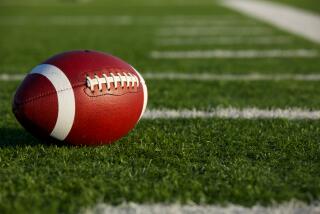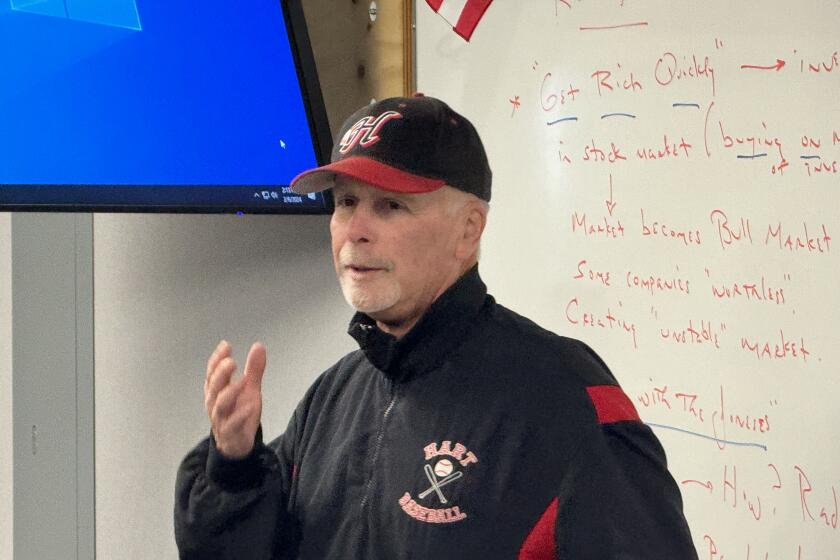Column: Chances are your high school sports team lacks a certified athletic trainer
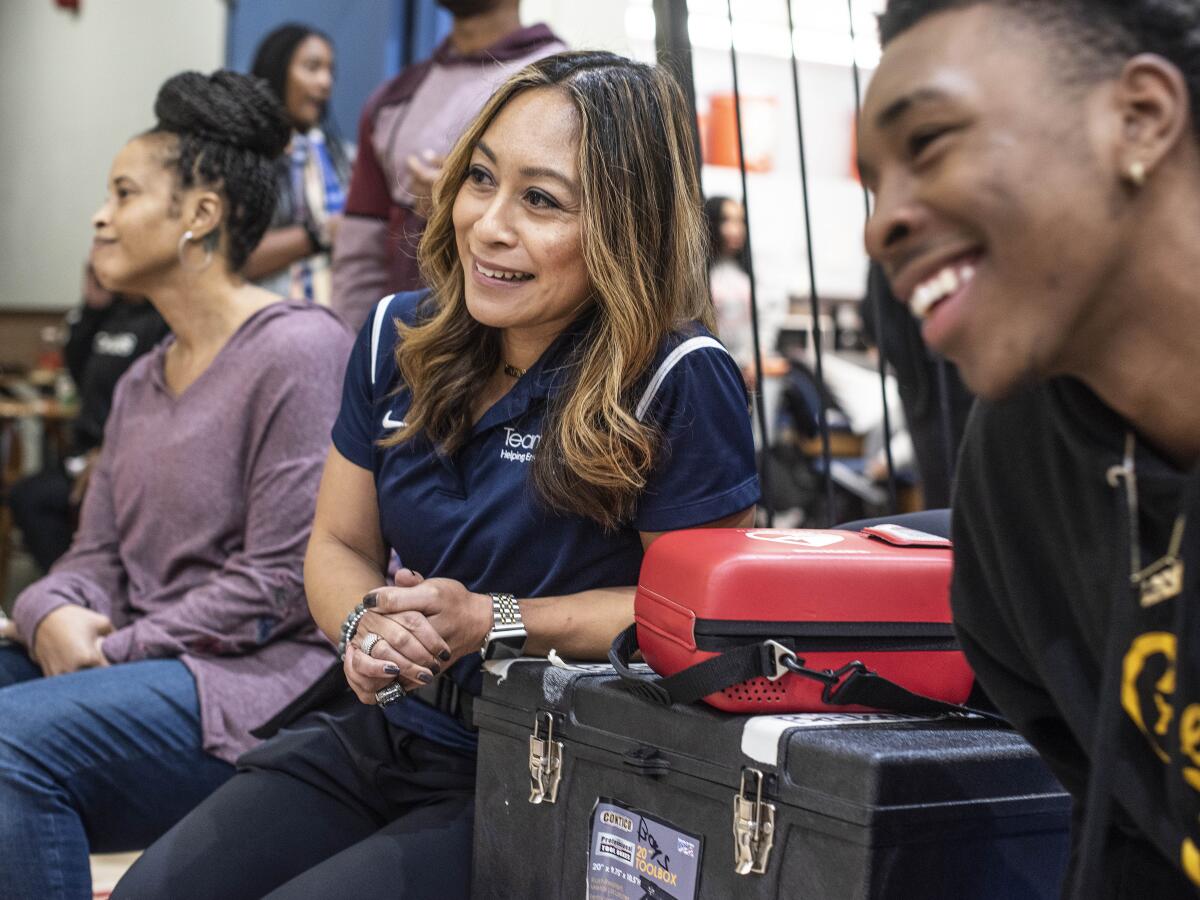
Ellen Kelly, the athletic trainer for Crenshaw High since 2010, was sitting in the bleachers behind the basketball team with 31 seconds left in a game against View Park Prep at Maya Angelou. Next to her was her medical bag and defibrillator.
Kelly was watching the one-point game when suddenly her student trainers started shouting.
“I didn’t know he collapsed until my students yelled my name and pointed to him on the floor.”
Head coach Ed Waters was motionless on the court. The first person to reach him was Kevin Booker, the husband of a Crenshaw counselor. Kelly soon joined him in trying to assess Waters’ condition. She quickly instructed her students to retrieve her bag and the defibrillator, known as an AED. There was a 911 call made at 8:28 p.m. reporting a cardiac arrest, according to a Los Angeles Fire Department spokesman. An engine company and paramedics arrived at the campus at 8:32.
Kelly and Booker determined that Waters was not breathing. They also couldn’t find a pulse. Kelly cut open Waters’ shirt, took out a rescue mask for Booker to use and applied the wired pads from the AED to his chest. Booker, Kelly and several others with CPR knowledge began chest compressions. Kelly said the AED indicated a shock should be applied. Three times Waters was shocked. Meanwhile, there were reports of a possible gang confrontation outside the school. Kelly sent her student trainers to direct the LAFD to the gym as part of a previously designed emergency action plan.
“My students are brave and ran through to get the ambulance and tell them to get to me because it was chaos outside,” she said.
Waters was transported to a hospital at 8:46. He was in stable condition and talking later that night. It’s clear that quick action by the group of individuals, led by the athletic trainer, helped prevent a tragedy on Jan. 15.
How fortunate was Crenshaw to have a certified athletic trainer at the basketball game? There are 83 schools in the Los Angeles Unified School District with basketball programs and only eight have full-time athletic trainers. The road game was originally scheduled as a day game, and Kelly said she would not have attended if it had not been changed to a night game because of a scheduling conflict at Crenshaw.
“If I’m available, I will travel to a basketball game, exactly for this reason, because there’s a lack of medical care is why I go and why I bring my AED everywhere I go,” she said.
There are 814,000 students participating in high school sports in California, and more than 47% of schools have no athletic trainer, according to a 2019 survey by the National Athletic Trainers’ Assn, that was published in the Journal of Athletic Training.
California is the only state that does not regulate athletic training. There has been a political stalemate over the issue among politicians in Sacramento for more than 30 years.
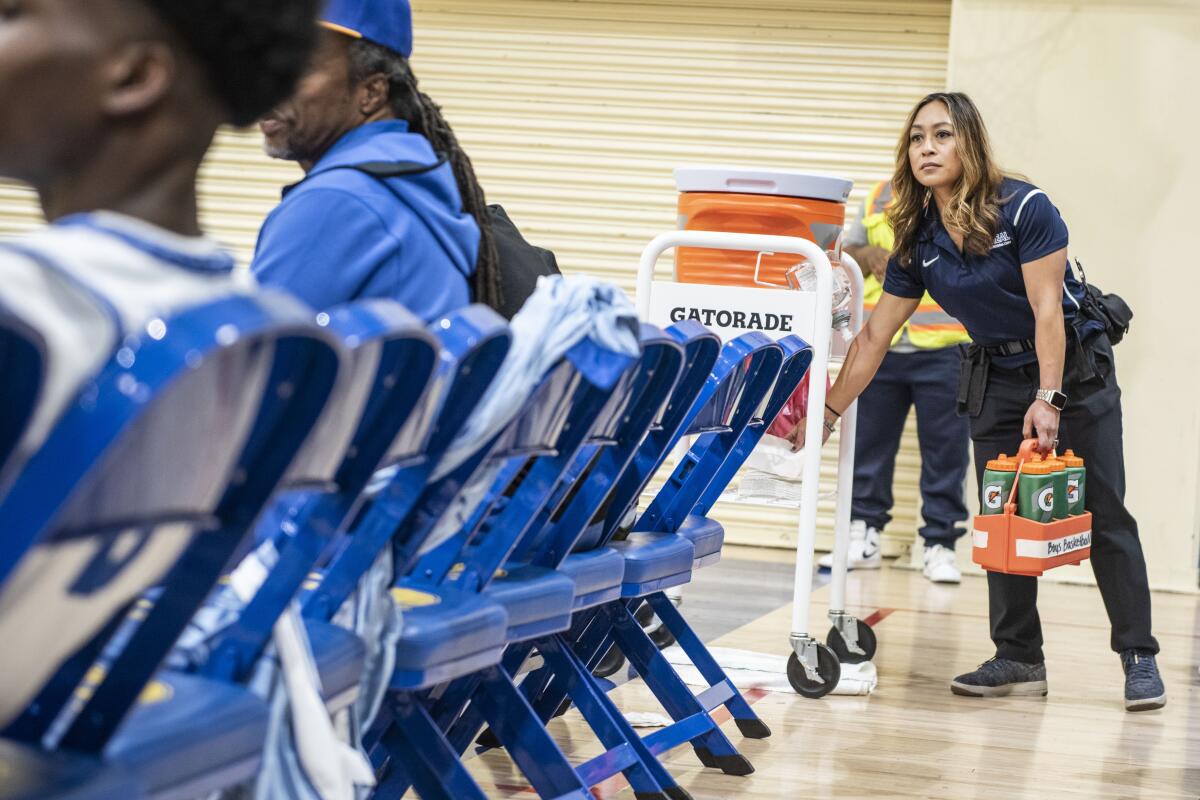
Stuck in the middle are schools and parents trying to protect teenagers during athletic competitions. Crenshaw has had an athletic training program for 25 years thanks to Dr. Clarence Shields, who started Team HEAL, a charity program for underserved communities through the Kerlan-Jobe Orthopedic Clinic. Cedars-Sinai Medical Center has taken over and provides a financial grant to LAUSD to pay for athletic trainers at Crenshaw, Dorsey, Banning, Carson and Westchester. Trainers at Woodland Hills Taft and Granada Hills Kennedy are provided through a partnership with Providence St. Joseph Hospital. Venice has a trainer through West Coast Sports Medicine.
LAUSD is hoping to increase access to athletic trainers by setting up additional partnerships, athletic coordinator Trent Cornelius said.
The Williams S. Hart Union High School District is an example what can be accomplished with partnerships. In 2016, six high schools in the district gained full-time athletic trainers with 50-50 funding between the district and Henry Mayo Newhall Hospital. District official Greg Lee said he was at a football game involving Hart High and was impressed how Huntington Beach Edison handled an injury. He began investigating how his district could create a similar sports medicine program.
“We’ve really benefited from having a major, world-class hospital in town,” Lee said.
The district recently signed off on another four-year agreement with Henry Mayo sharing costs. Henry Mayo is responsible for hiring the trainers and evaluating their skills. Lee believes the district‘s financial investment has provided invaluable support to students and families. He said athletic trainers have become key figures in providing preventive care, serving as liaisons with teachers when a student is struggling in a classroom because of concussion or other health issues and being ready to respond to a medical emergency.
“It’s a win-win,” said Eric Post, an assistant professor and athletic trainer at San Diego State. “Hospitals enhance their revenue and patient base, and athletes will be better with injuries evaluated and receive prompt, competent care in case of an emergency.”
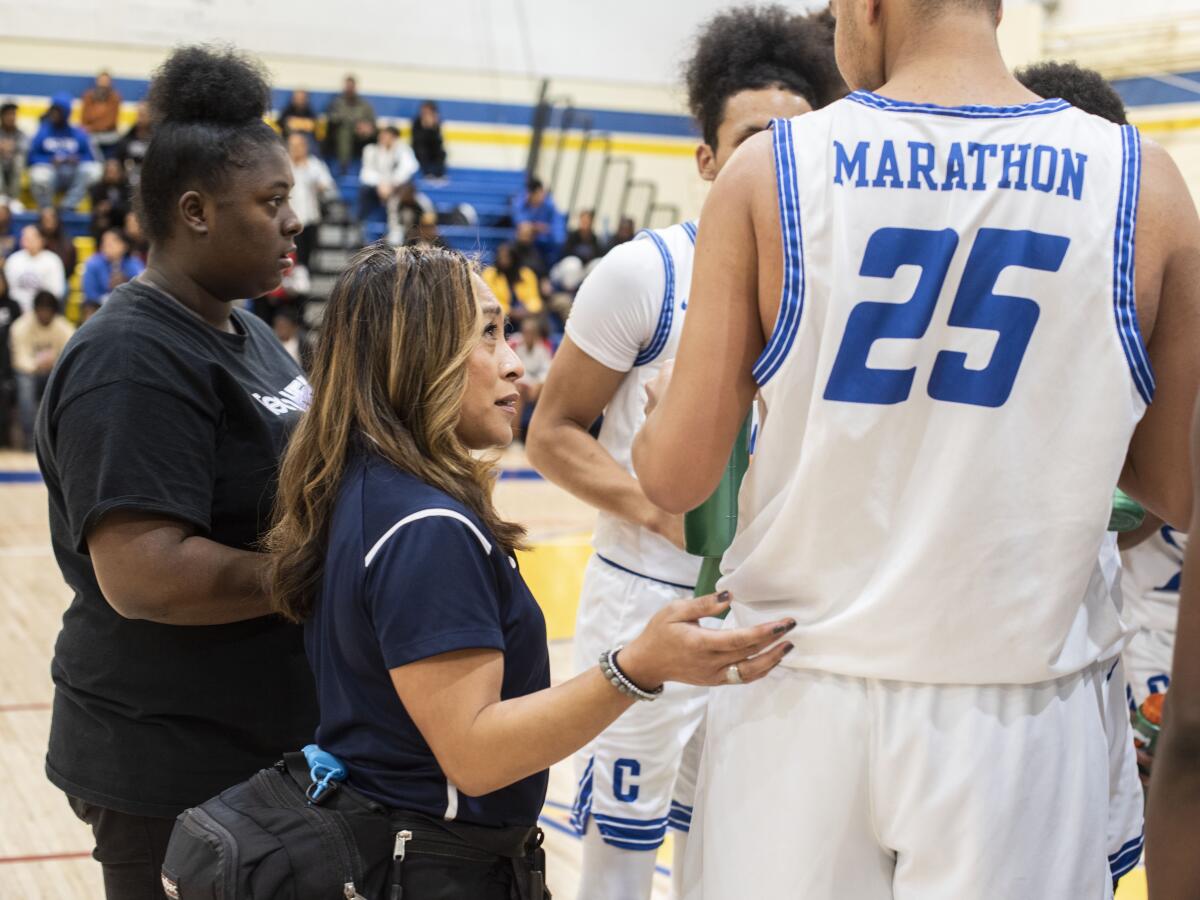
Kelly said she had never used the AED in a real emergency setting, but her training kicked in when the stakes couldn’t have been higher.
“He’s like family to me, which makes it more stressful,” she said of aiding Waters. “To perform under that pressure with someone you care about adds another dimension of stress and pressure.”
Kelly was back in her training room adjacent to the Crenshaw gym this week, instructing student trainers and offering treatment to athletes.
What happened was a reminder of an athletic trainer’s importance.
“I think people only think of us, ‘Oh, they give us water and take care of our knees and tape the ankles,’ but it’s so much more beyond that,” Kelly said.
More to Read
Get our high school sports newsletter
Prep Rally is devoted to the SoCal high school sports experience, bringing you scores, stories and a behind-the-scenes look at what makes prep sports so popular.
You may occasionally receive promotional content from the Los Angeles Times.

